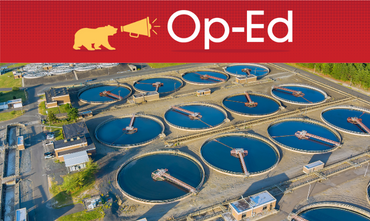The views and opinions expressed herein are those of the author and do not necessarily reflect the views of PublicCEO, its sponsors, its employees or any corporate relationships.
Op-Ed submitted by Mark E. Alpert, PE, FDBIA
California is emerging from drought and the pendulum has swung the other way, with successive atmospheric rivers and regional flooding reminding us that we are at the whim of climate extremes. Droughts in the West are becoming longer and drier, punctuated by heavy, fast-moving storms. This uncertainty requires smarter, more nimble management of our water supplies, and many local cities and water providers are making smart infrastructure investments that will create a more resilient, sustainable water supply.
In California, it just got a little easier to advance these important projects.
On January 1, 2023, CA SB 991 went into effect, which allows more local water agencies to deliver efficient and cost-effective water storage, treatment and distribution projects through a process known as the progressive design-build (PDB) delivery method.
Local water agencies including cities, counties and specified special districts can now leverage the PDB method for projects estimated to cost more than $5 million. The PDB method, which was previously not available to all water agencies, will reduce the overall risk, timeline and cost of important water projects, ultimately helping to address the state’s need for water.
PDB is a valuable form of collaborative project delivery—the planning, design and construction process of a project—that is gaining popularity throughout the United States. Industry studies show projects delivered through design-build perform better in terms of quality, schedule and cost compared to traditional delivery methods.
PDB was quickly adopted by many water and wastewater agencies due to these benefits and is becoming the preferred method for delivering important projects across the country. It’s easy to see why.
The PDB process requires that projects adhere to high performance standards, which would ensure California’s future water projects are fully operational when they open and can begin to address their water needs right away. Unlike other project delivery methods, the PDB process includes a contractual obligation that holds parties accountable for the delivery of the project based on who can best control performance risks such as permitting, fines, penalties or professional liability. This extra accountability ensures the project’s overall success including high standards for water storage, treatment and distribution. Additionally, the strategic approach to risk management contributes to shorter project timeframes.
Projects delivered using the PDB process have a shorter overall project schedule, allowing critical water projects to move forward more quickly as California accelerates its drought response. Governor Gavin Newsom announced a new water supply strategy for the state in August 2022 that calls for investments in new water supply sources, accelerating water transportation projects and leveraging technology to improve how the state manages water. As California faces losing 10 percent of its water supply by 2040 due to hotter and drier weather, moving these projects along quickly is needed more than ever.
Leveraging PDB would provide more cost certainty and transparency for planned and proposed water projects, saving the state and taxpayers money. In the last three years, California lawmakers designated more than $8 billion for water infrastructure modernization and management to ensure the state can generate enough water for more than 8.4 million households by 2040. Using the PDB method for future projects would save costs from the reduced overall build time compared to other delivery models. It would also ensure responsible use of taxpayer funds since all parties agree to a final price before the project goes to procurement and owners can make real-time design decisions based on cost estimates done throughout the project.
Overall, water agencies with new eligibility to use PDB may find value in the timeline efficiency, cost transparency and the collaborative nature of the process. Like all collaborative delivery methods, this approach is grounded in shared accountability, trust, teamwork and transparency.
California lawmakers are ready to advance critical water projects to mitigate the effects of prolonged drought and they’ve given us the tools to be part of the solution.
Let’s get to work.
 Mark E. Alpert is executive director of the Water Collaborative Delivery Association, a leading professional association dedicated to advancing successful collaborative delivery solutions for the water and wastewater industry.
Mark E. Alpert is executive director of the Water Collaborative Delivery Association, a leading professional association dedicated to advancing successful collaborative delivery solutions for the water and wastewater industry.
For more than 40 years, Mark Alpert has been a pioneer in the development of collaborative project delivery for water and wastewater projects. Even before the term design-build was commonly recognized, Mark was focusing on cost-effective design and construction, which led to the formalization of design-build and other collaborative delivery methods.
As a former senior vice president of design-build for CH2M HILL (now Jacobs), Mark directly influenced the successful development and delivery of more than 75 design-build projects. He has been an active member of the Design-Build Institute of America (DBIA) since 1995 and has served on the board of the Water Collaborative Delivery Association since its inception in 2006 and as its executive director since 2014. In 2009 Mark was given the Brunelleschi Lifetime Achievement Award, the highest award given by DBIA.
In addition to his WCDA position, Mark serves as president of Integrated Delivery Solutions which provides advisory services to public and private sector owners for engineering, architecture, construction, and technology matters. He is a member of the Water Environment Federation, the American Water Works Association, and the American Society of Civil Engineers.
Do you agree with this op-ed? Do you disagree? Do you have another viewpoint you’d like to share on PublicCEO? Opine on an idea or share your insights in an op-ed. Submit one now.






